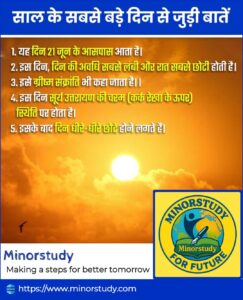🌅 Introduction: Embracing the Longest Day
Longest Day: Every year around June 20–22, the Northern Hemisphere experiences its longest day and shortest night—the Summer Solstice. This is the moment the sun stops climbing northward and lingers directly overhead at the Tropic of Cancer, delivering up to 15–16 hours of daylight in mid-latitude regions. More than a celestial event, it’s a celebration of light, life, renewal, and community.
- 🌅 Introduction: Embracing the Longest Day
- 📜 History & Origins: Humanity’s Ancient Sun Rituals
- 🕰️ Timeline & Modern Celebration
- 🌟 8 Enthralling Facts About the Summer Solstice
- ❓ FAQs: All Your Questions Answered
- ✨ Significance & Daily Life Impacts
- 🎉 Wishing & Celebration Ideas
- 🌼 Observance & Rituals Around the World
- 🕊️ Why It Matters to Society
- 🔑 Key Takeaways to Remember
- 🌈 Conclusion: Daily Life Impacts of the Longest Day
📜 History & Origins: Humanity’s Ancient Sun Rituals
Human civilizations have long marked the solstice. In Ancient Egypt, it heralded the rise of the Nile, aligning temples to the sun’s rays and signaling the new year indiatoday.inpeople.comeducation.nationalgeographic.org. The Romans honored Apollo, god of the sun, while Germanic and Nordic tribes lit bonfires—believed to ward off evil and bring fertility—during Midsummer nypost.com.
Iconic sites like Stonehenge, Woodhenge, and Seahenge were all built with the solstice sunrise in mind, symbolizing earth’s connection to the cosmos thetimes.co.uk.
🕰️ Timeline & Modern Celebration
Here’s how solstice celebration has evolved:
Prehistoric times – Monuments like Stonehenge mark solstice sunrises.
Ancient Egypt & Rome – Solar ceremonies, festivals, and calendar alignment.
Middle Ages – Northern Europe observes Midsummer, a harvest celebration.
Modern era – Sun‑worship survives as cultural rituals across Scandinavia, the Baltics, and parts of Europe.
Contemporary:
June 20, 2025: Solstice at 02:42 UTC (10:42 p.m. EDT) nypost.com+2education.nationalgeographic.org+2people.com+2indiatoday.in+9space.com+9ctinsider.com+9.
Celebrations include bonfires, feasts, yoga sessions, polar‑region festivals, and massive gatherings at Stonehenge .
🌟 8 Enthralling Facts About the Summer Solstice
Sun stands still: “Solstice” derives from Latin sol (sun) + sistere (to stand still), referencing the sun’s pause in its northern movement weather.gov+3almanac.com+3timeanddate.com+3.
Tropic of Cancer zenith: The sun’s vertical position at the Tropic of Cancer—23.5° N—marks the solstice point .
Daylight extremes: Mid-northern latitudes enjoy ~15 hours; above the Arctic Circle, expect 24-hour daylight space.com.
Not peak heat: The hottest days come weeks later due to seasonal lag ctinsider.com.
Irregular dates: Solstice dates shift year‑to‑year between June 20–22 .
Earliest sunrise myth: Earliest sunrise often comes before, and latest sunset often happens after the solstice timeanddate.com+2wral.com+2almanac.com+2.
Over 190 nations celebrate: Countries like USA, India, Sweden, Finland, and more host public gatherings and rituals .
Symbol of renewal: Spiritually, the solstice means rebirth, fertility, and acknowledging the triumph of light over darkness .
❓ FAQs: All Your Questions Answered
When is the solstice?
In 2025, it falls on June 20th at 02:42 UTC—which is 10:42 p.m. EDT on June 20 or 8:12 a.m. IST on June 21 .Why is it the longest day?
The Northern Hemisphere tilts maximum toward the sun, putting the sun at its highest noon position and maximizing daylight duration ctinsider.com+4almanac.com+4indiatoday.in+4rmg.co.uk+6space.com+6thetimes.co.uk+6.Does the sun stop moving?
Not literally; the apparent shift at sunrise/sunset slows and reverses—seen as a “standstill” .Is it hottest?
No. Land and oceans need time to absorb heat, so temperatures peak later .Are earliest sunrise/latest sunset on solstice?
Rarely; due to Earth’s orbital eccentricity and axial tilt, the earliest sunrise occurs before and latest sunset after the solstice .Is it still observed today?
Yes—globally! Bonfires in Europe, yoga in the U.S., celebrations in India, and sunrise watchers at Stonehenge .
✨ Significance & Daily Life Impacts
Spiritual renewal – Opportunity for introspection, intention-setting, connecting with nature, and harnessing solar energy .
Cultural cohesion – Bridging past and present through shared heritage—folk songs, rituals, poetry, festive meals .
Health benefits – Fresh air, outdoor gatherings, greater vitamin D exposure, and ritual practices like yoga and sun salutations .
Agricultural alignment – Traditional planting and harvesting tied to solstice timing .
Environmental awareness – A chance to celebrate solar power, sustainability, and climate consciousness through eco-friendly events .

🎉 Wishing & Celebration Ideas
“May this longest day fill your life with warmth, clarity, and bright beginnings!”
“Under the solstice sun, may you find energy renewed, spirits lifted, and light guiding every step.”
“Happy Solstice! Bask in the brightness and let your soul bloom under endless daylight.”
“Wishing you a joyful Midsummer—full of fire‑lit dance, laughter, and connection!”
“May the solstice’s energy release your shadows and ignite your inner light.”
🌼 Observance & Rituals Around the World
Stonehenge Sunrise: Thousands gather to watch the sun align with ancient stones .
Midsummer Bonfires: Sweden, Finland, and other Nordic countries light bonfires, dance, and feast .
Yoga & Sun Salutations: Outdoor yoga, especially sequences of 108 sun salutations, are common nypost.com.
Feasts & Flowers: Traditional dishes, flower crowns, and maypoles are common in parts of Europe .
North Pole Darkness: Contrastingly, the Southern Hemisphere marks the shortest day—the Winter Solstice .
🕊️ Why It Matters to Society
Cultural identity: Solstice traditions preserve folklore, history, and seasonal wisdom.
Mental wellness: Community rituals, outdoor light, and symbolic rebirth ease winter blues and promote well-being.
Environmental flow: Marks shifting seasons—time for sustainable farming, solar initiatives, and ecological reflection.
Social harvest: Shared festivals and communal bond-building under the sun.
Calendar anchor: Ancient astronomical event guiding modern life rhythms.
🔑 Key Takeaways to Remember
Occurs around June 20–22, 2025 precisely at 02:42 UTC on June 20 .
Sun directly overhead at the Tropic of Cancer (23.5° N) .
Longest daylight, but not hottest day economictimes.indiatimes.com+3timeanddate.com+3almanac.com+3.
Earliest sunrise ≠ solstice, and latest sunset comes after .
Called “Midsummer” in Europe, marking mid‑season .
Rooted in ancient rituals worldwide, celebrated even today .
Symbolizes renewal, community, environmental harmony, and inner balance.
🌈 Conclusion: Daily Life Impacts of the Longest Day
The Summer Solstice is a cosmic nudge—urging us to pause under the abundant sun, reflect on our growth, and plan for the unfolding season. Even if not aware of its science, everyone senses this day’s heightened energy and shared legacy.
In daily life, it invites us to:
Reconnect with nature—walk barefoot, celebrate sunrise.
Create light rituals—from bonfires to meditation.
Gather with others—celebrate shared humanity.
Align with sun‑centered vitality—eat fresh, stay energized, practice gratitude.
What matters isn’t ritual perfection—it’s presence in the light. Let this bold, bright day spark your inner sunlight.








